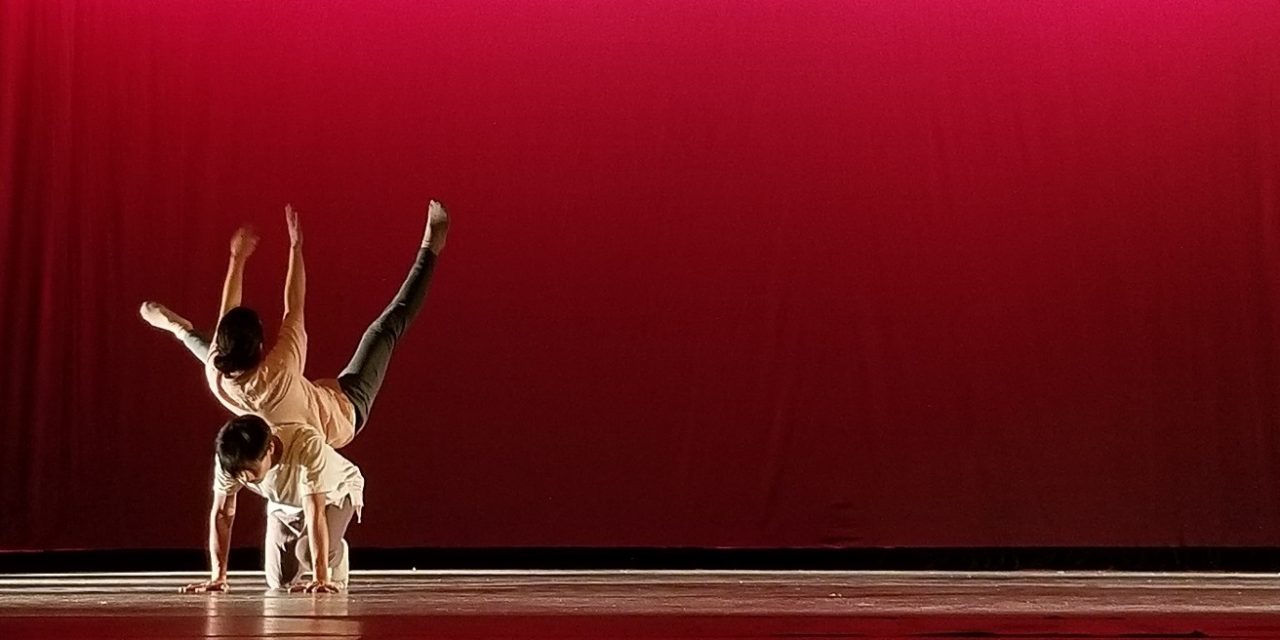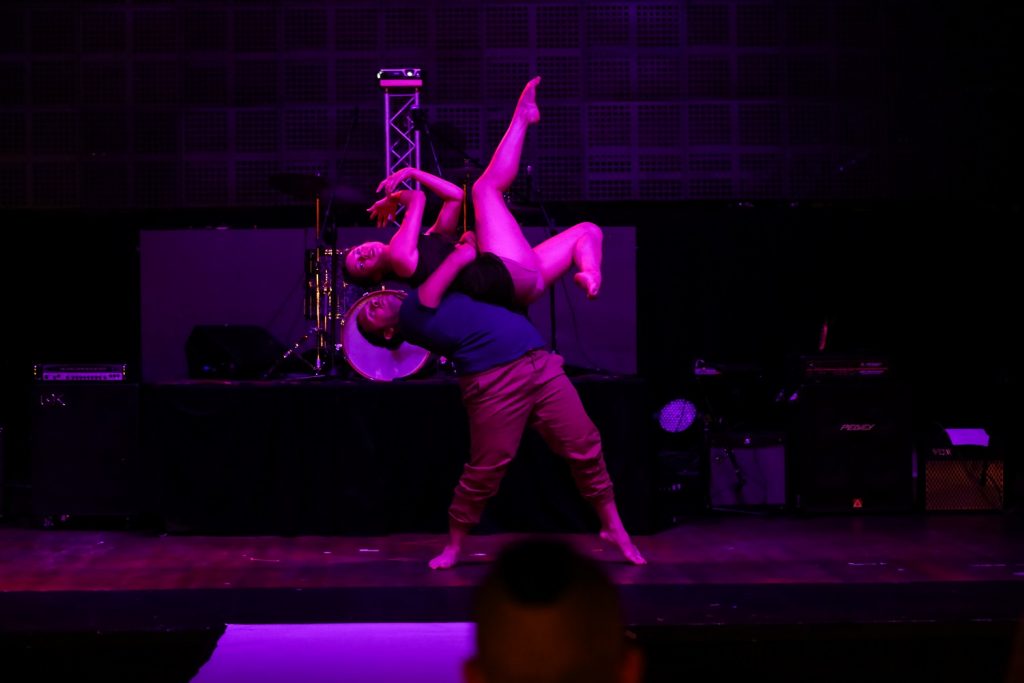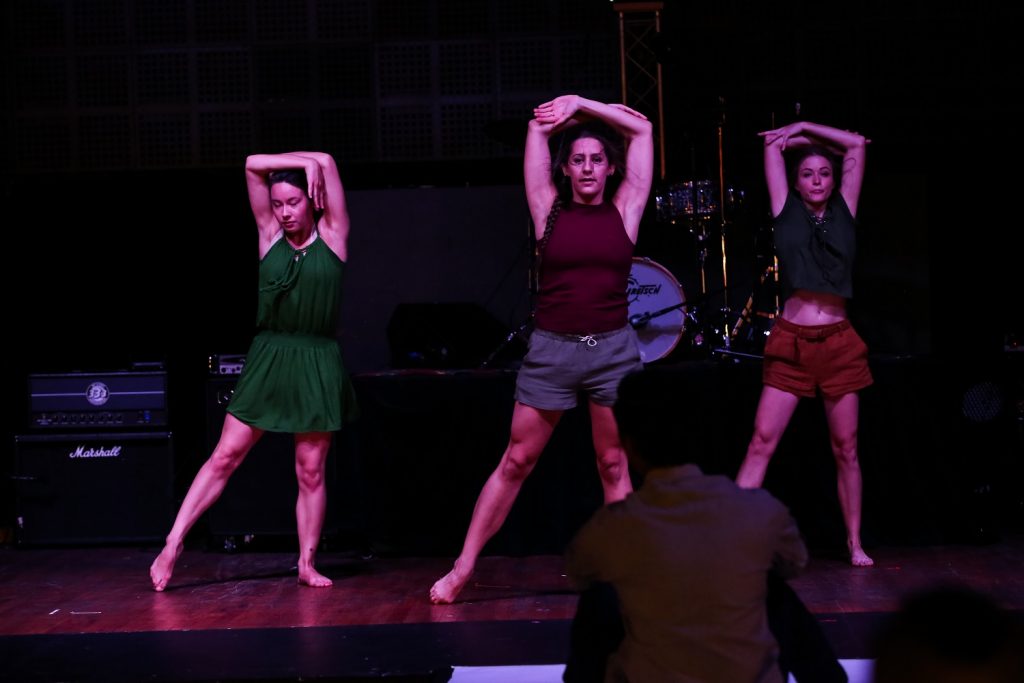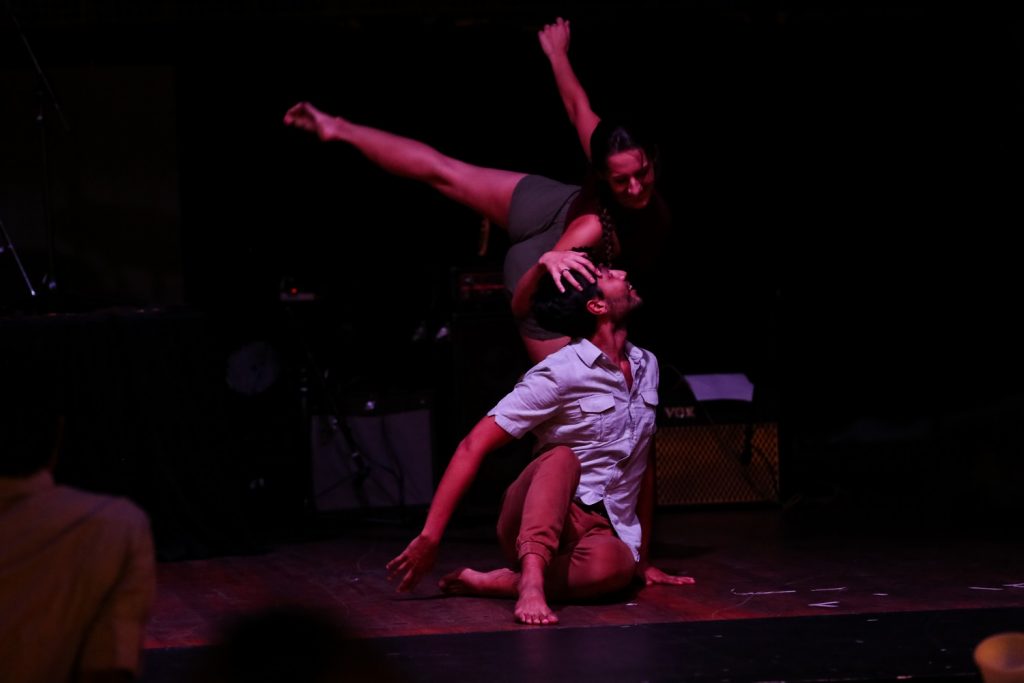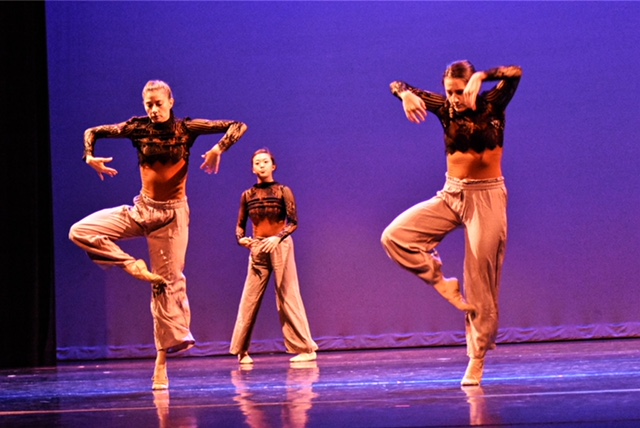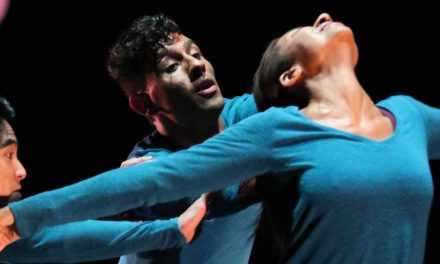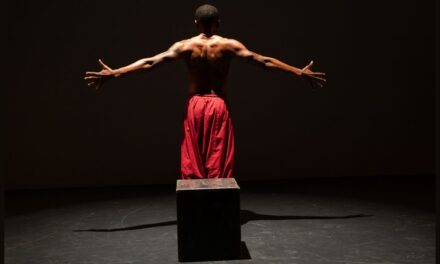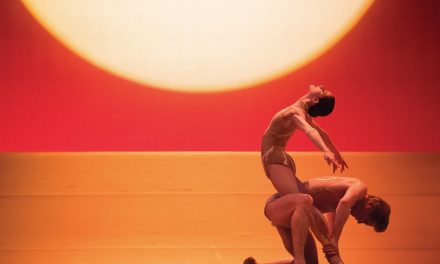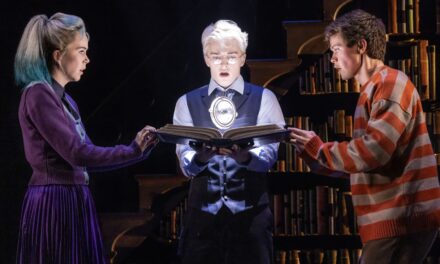Before the performance of DAGDAG Dance at Diavolo Performance Space, Jestoni Dagdag took the stage to introduce the work. He described the program as being about relationships, identity, community and self-acceptance. Mr. Dagdag describes his style as influenced by modern, contemporary, jazz and classical ballet, and it is wonderful when a production delivers exactly as described.
Each piece involved intricate weavings of bodies and music, and each spoke to different aspects of our human relations. Togetherness, separation, isolation and community were among the threads. Dagdag has mastered the art of choreographically filling the stage space, whether there is a large group or a single dancer being featured. His toolkit also includes a knack for directing the eye. Not every choreographer can do both. Dagdag uses his intelligence and passion to create accessible choreography with depth of composition and meaning
The opener, Garner Suite, began with a tableau, and filled the stage with 12 dancers. Subsequent solos and small groupings eloquently expressed longing and romance. My heart was satisfied to see sweeping movement and solid technique. Soloist Hyoin Jun was dazzling.
The cast of Garner Suite included: Noel Dilworth, Hyoin Jun, Esther Jung, Joseph Lister, Emeline Lotherington, Angela Nunes, Blair Pope, Jessica Richards, Mizuki Sako, Brooke Sonke, Madi Thielman, and Elisa Tollett.
Night Thoughts was a riveting solo performed by the powerful Rein Short. Everyone in the audience could relate to expressions from delicate dreaming to full-on nightmare. We felt the longing, wondering, the inner searching and deep fear that can come with the night.
Empty Halls: Nameless Walls was a dynamic duet that spoke to our human need for support. Blair Pope and Eliza Tollett’s non-traditional ballet featured a mix of tenderness and strength. Their partnering/lifts were full of surprises. For example, a dancer leaping sideways toward a partner who is bent at the waist with arms forming a circle. These breathtaking moments flowed with the phrasing of the music, and carried us to the next moment without a break.
Perchance to Dream gave us multiple treats: a strong solo dancer, Paige Amicon, and Leah Hamel performing J.S. Bach’s Unaccompanied Cello Suite No 1 Prelude. The opening sculptural forms took me to famous still images of Martha Graham. The movements of undulation, reaching and rolling bore a less rigid quality. The feelings of isolation and reaching out were strengthened by the mirroring of Bach’s distinctive pulsing rhythm.
Argonauts gave us a large ensemble from which partnerings and small groups took us on a voyage to togetherness. The choreography and Philip Glass’ score began softly and built to a crescendo. The moment where the group formed a long diagonal line immediately brought to mind a ship. The Greek mythic journey of Jason aboard the Argo in search of the Golden Fleece is a great metaphor for all human quests.
The cast included Noel Dilworth (lead), Victor Hugo, Esther Jung, Emeline Lotherington, Elizabeth Mu, Angela Nunes, Rein Short, Brooke Sonke, Kenneth Teo, and Eliza Tollett.
Awakenings was a startling drama in 5 parts, looking at isolation, conflict, and hope for redemption. Dancers with their faces covered became unseeable characters, and those in black masks were the traditional bad guys who bullied, taunted and manipulated their way through a series of interactions with a lone man. This drama was expressed through stunning feats of non-traditional partnering, dragging, rolling and running. Hyoin Jun and Keri Prokopidis were riveting. The music mix ranged from Deru (Benjamin Wynn) to Billie Holiday, and the closing voice was heard to say, “…Good morning to the whole wild world.” That world is a place where our solo dancer overcomes the men in black, only after a dire struggle.
Continuum was created by guest choreographer Irishia Hubbard, the Artistic Director of The Hubbard Collective. The work featured crossings of the stage by an ensemble of 13 dancers, in groups of varying number. The movement dynamic fit well with the rest of the program. The descriptors that came to mind included scoop, reach, crawl and drag. Paige Amicon was outstanding as she lunged across the stage. The choreography started softly, but built tension as it progressed, as did the ambient/percussive accompaniment of Raime’s Stammer.
A wonderful ensemble moment featured a short pattern common to many social dance forms. One steps down into a plie and brings the opposite knee up. That elevated ball of the foot pushes down to the floor to elevate the body, and then releases to lower again on the opposite side. This is repeated so that the push up and the lowering create a 1-2 pulsing. When performed by a group this simple combination creates a strong visual rhythm of unity.
The full cast of Continuum was Paige Amicon, Noel Dilworth, Esther Jung, Emeline Lotherington, Elizabeth Mu, Angela Nunes, Keri Prokoidis, Jessica Richards, Mizuki Sako, Rein Short, Brooke Sonke, Madi Thielman, and Eliza Tollett.
Performed to an original score by Shi Wei “Willie” Wu, Estranghero closed the concert with a powerful call to community. The original score for Taiko drum was created and performed by Shi-Wei “Willie” Wu. The movement was forceful yet joyous. Martial arts themes were repeated, including a gesture bringing together soft left hand and right fist symbolizing the marriage of self-discipline and restraint with rigorous practice. This move is often a demonstration of courtesy at the opening or ending of many martial arts practices. At the closing of the piece, the dancers closed into a tight circle, with their hands on their backs, in a strong symbol of community.
The dancers included Estranghero were Victor Hugo, Hyoin Jun, Joseph Lister, Elizabeth Mu, Keri Prokoidis, Mizuki Sako, Kenneth Teo, and Madi Thielman (lead).
Dagdag’s program, PASSAGE, was indeed a powerful yet warm look at relationships, identity, community and self-acceptance. As promised, he choreographs using all the stylistic elements that attract him. I look forward to seeing more of his visionary work.
Written by Mary Pat Cooney for LA Dance Chronicle, November 25, 2019.
To visit the DAGDAG Dance website, click here.
For more information on Diavolo Performance Space, click here.
Featured image:

